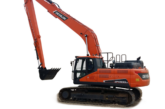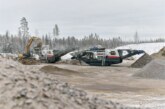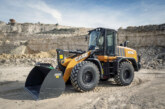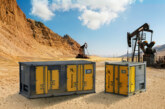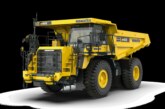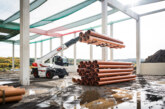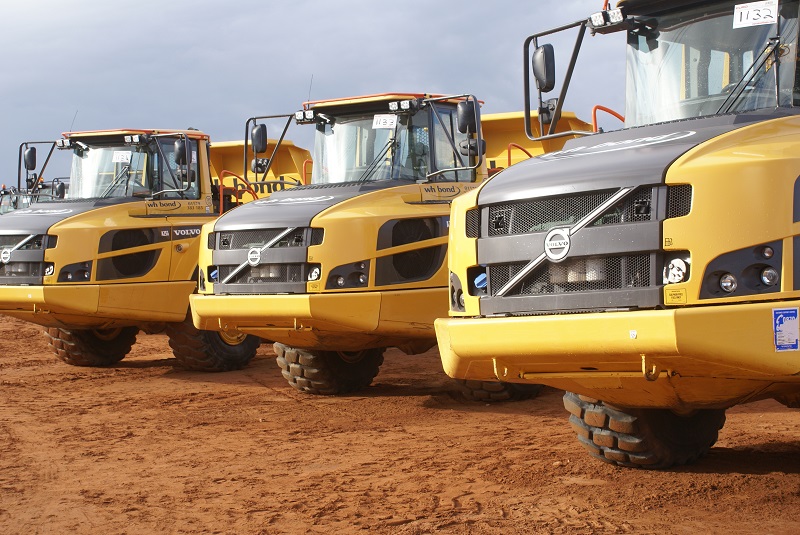
Kirstie Henry, from Kingspan Environmental, the AdBlue storage specialists, looks at the market and explains what is in store for owners of construction plant and machinery.
The construction industry is subject to a legislative ‘clean up’ which is now targeting machinery and equipment to reduce the amount of nitrogen dioxide within diesel exhaust fumes.
Since the late 1990s, when the non-road and off highway market was first regulated, the European Commission has pursued a path to reduce emissions across all industry sectors with construction related sectors high on its agenda. Limiting the particulate matter that diesel engines emit has resulted in manufacturers equipping non-road and off highway machines with new emission reducing technology.
In September 2016, Euro 6, the latest set of the regulations from the European Commission, made it mandatory for all diesel driven engines to reduce nitrogen dioxide (NOx) emissions by more than 55% – although some vehicle types still have longer to comply.
This still means significant changes for operators of plant, machinery and other construction equipment.
For all construction machinery that comes under the diesel emission regulations, the leading technology OEMs are implementing to meet the new regulations is Selective Catalytic Reduction (SCR). This involves spraying a fine mist of a urea and water based fluid called AdBlue into the catalytic convertor of the engines exhaust system, which in turn reduces the nitrogen oxide (NOx) emissions.
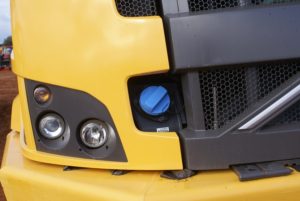 Diesel engines in all non-road and off highway construction plant are categorised according to the power rating of the engine, with these categories given limits for specified gaseous output.
Diesel engines in all non-road and off highway construction plant are categorised according to the power rating of the engine, with these categories given limits for specified gaseous output.
More commonly known as the STAGE rating for the engine, the UK is currently working to the Stage IV classification, with the next big milestone being Stage V emission standards, scheduled for implementation between 2019 and 2021.
The Stage V standard is designed to further align European non-road emission standards and will be introduced as a regulation, making direct adoption by EU member states easier. Stage V is seen as an opportunity to align all equipment types to a single emission standard, including those types previously exempted.
Stage V requirements will introduce stringent emissions standards for compression ignition (CI) engines below 19 kW and all engines above 560 kW, all previously outside legislative requirements.
The current classifications under the Euro 6 STAGE ratings are for vehicles with diesel engines that fall into the 19kW to 560kW power band. The new Stage V proposal will introduce more stringent standards for this power bracket, which will further affect the construction plant sector.
Between the 19 kW to 37 kW rating, machinery will be upgraded from Stage IIIA to Stage V and equipment between 37 kW and 56 kW, upgraded from Stage IIIB to Stage V which will mean more stringent standards and the potential expansion for SCR technology.
New standards for equipment below 19 kW and above 560 kW will be introduced and this will include spark ignition petrol engines, in addition to the diesel powered hand held category at the lower end and larger earth moving machines at the upper end.
Operators running new equipment will comply to the current Stage IV & V regulations as OEMs will have satisfied legislation on the production line with emissions reducing technology built in. For operators running older non compliant equipment and machinery, there is another set of challenges to deal with in order to comply, which may include retro fitting emission reducing technology.
The most expensive option would involve replacing non-compliant equipment with new machinery that will comply and already be fitted with Selective Catalytic Reduction (SCR) technology using AdBlue. There are a number of alternative retrofit options which operators may employ.
This includes retrofitting a Diesel Particulate Filter (DPF), a type of soot trap, which when fitted to the exhaust system will reduce emissions. Other options include fitting catalytic convertors to the exhaust system, mitigating particulate emissions, or lastly fitting SCRF technology, a combination of SCR and DPF in one single system, an approach already being used in the logistics sector.
The SCR technology and AdBlue option, with SCR & DPF are the most efficient counter measures for the market, providing the best overall reduction of NOx gasses.
With an increased requirement to have stored AdBlue on construction, quarrying and mining sites therein lies the critical challenge for quality storage techniques.
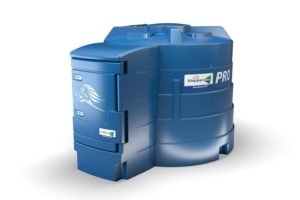 The non-road and off highway market is currently being supplied with ‘packaged products’, with the solution delivered in 10 litre cans or small drums.
The non-road and off highway market is currently being supplied with ‘packaged products’, with the solution delivered in 10 litre cans or small drums.
Companies like Kingspan Titan are now providing the market with an entire range of bulk storage options through its BlueMaster range. Operators running large SCR fleets are able to store and dispense the fluid safely on site, maintaining purity, complying with international regulations and ensuring it remains pure for its lifetime in the tank.
The KingspanTitan BlueTruckMaster mini bulk storage unit also offers a portable storage solution for when multiple machines need refuelling on remote projects in inaccessible locations, and where larger storage tanks cannot be sited.
And what are the penalties?
For OEMs, strict conditions now apply when supplying new equipment. The Exhaust Emissions Directive states that to sell machines the engines type approval must be gained for the engine from the appropriate approval authority, which in the UK is the VCA (Vehicle Certification Agency). This is the responsibility of the engine manufacturer and failure to comply carries a penalty.
In the UK this is a maximum £5,000 fine if an OEM supplies a new machine fitted with an engine that has not been type approved. Breaking the regulations is also an offence under the Consumer Protection Act 1987. This means OEMs could face custodial sentences and unlimited fines, as well as being forced to recall and replace products sold.
Kirstie Henry concludes: “It is clear that operators will have more legislation to contend with, however Stage V is setting out to create a single set of guidelines. Also as new equipment comes onto the market compliance issues will have already been resolved.
“SCR and AdBlue will be the technologies of choice and these will assist the UK in meeting its requirements to reduce nitrogen dioxide emissions for all diesel driven engines.”
For more information about the AdBlue solutions from Kingspan Environmental click here.

